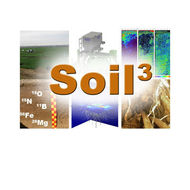Cereal Response to Deep Tillage and Incorporated Organic Fertilizer (2019)
Jakobs I., Schmittmann O., Athmann M., Kautz T., Lammers P.
Agronomy, 9 (6), 296
doi:10.3390/agronomy9060296
Abstract
This study examined the effect of stripwise subsoiling and subsoiling combined with the incorporation of organic material on crop development in a two-year field trial with typical weather in the first year and hot, dry weather in the second. Subsoiling and its combination with incorporated organic materials had strong effects on plant development and crop yield of spring barley (2017) and winter wheat (2018). The subsoil was loosened in 30 cm wide furrows down to a depth of up to 60 cm with a tine (DL) or a spader machine (SM) and was compared with the same methods of subsoil loosening combined with the incorporation of compost from biological household wastes (DLB and SMB). Furthermore, green waste compost (SMG), chopped straw (SMCS) and sawdust (SMS) were incorporated with the spader machine only. DL successfully reduced penetration resistance underneath the furrow and enhanced root growth underneath and near the furrow over the whole experimental period. Grain protein content above the furrow was enhanced compared with the untreated control (C) in the first year, but grain yield did not increase. DLB also reduced penetration resistance and increased root growth, but furthermore caused considerable increases in soil mineral nitrogen underneath the furrow throughout the vegetation period. Consequently, both yield and grain protein content above the furrow were tendentially increased as compared with the C. In SMB, grain yield increased even more than in DLB, compared to C, in 2017 (84% for SMB vs. 19% for DLB) and nearly equally in 2018 (65.4% vs. 65.2%) while all other treatments tendentially decreased grain yield above the furrow as compared with C. The results indicate that subsoiling with the introduction of organic material can reduce mechanical impedance and increase soil nitrogen and thereby ensure stable yields during dry periods, which become more frequent under climate change.
